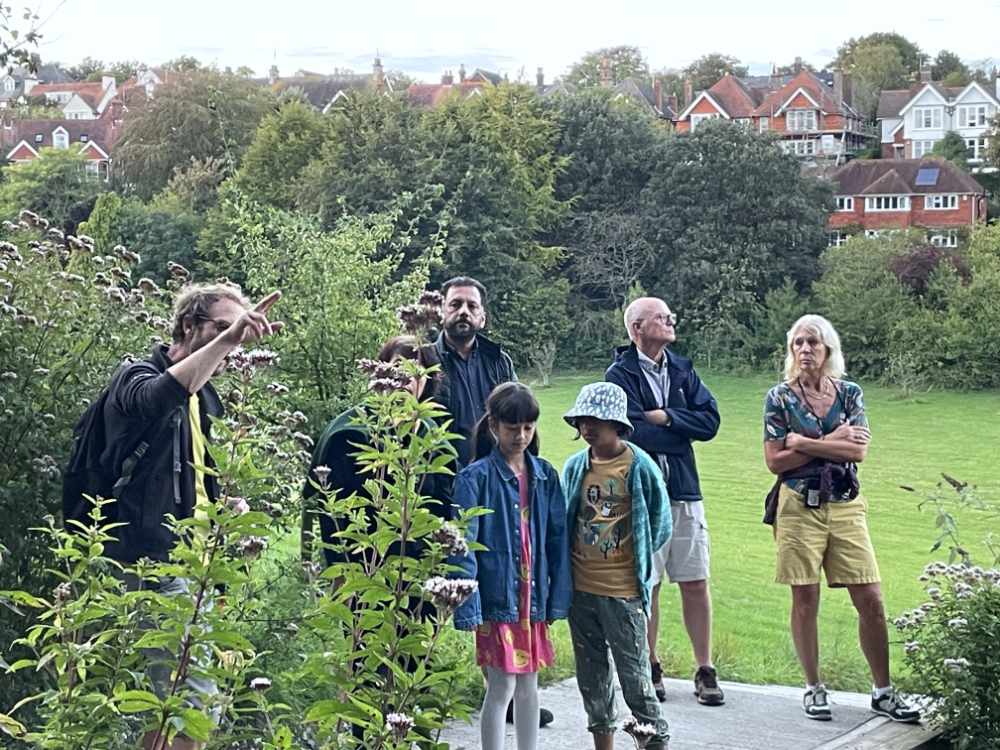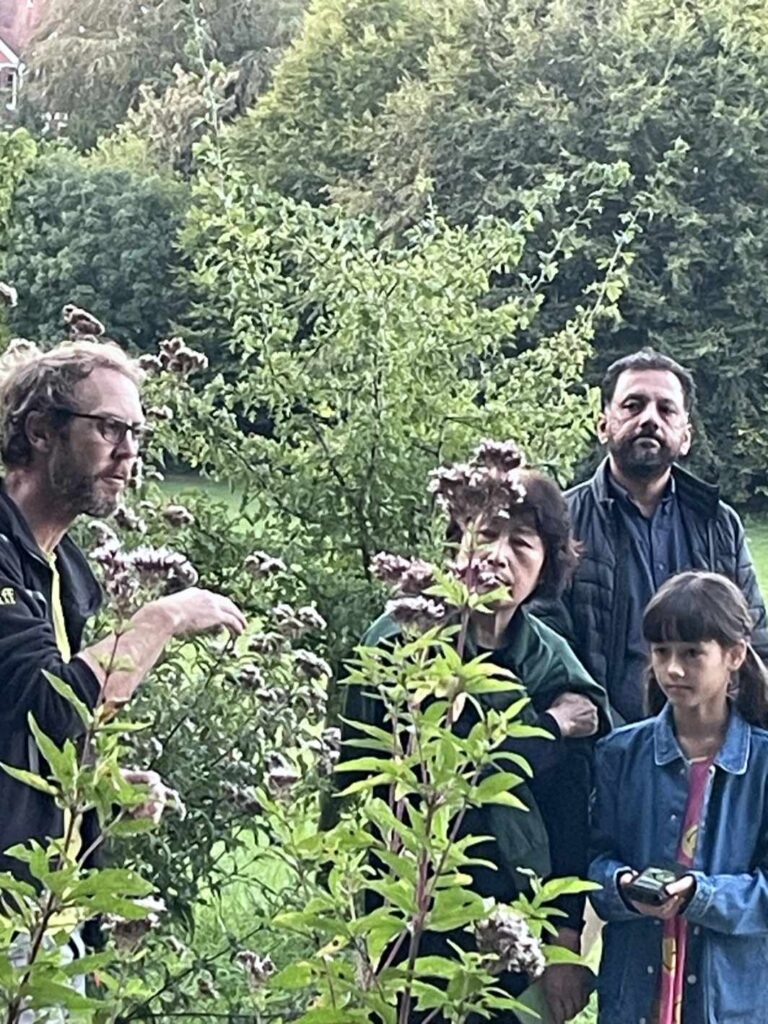
Baxter’s bat event finds third of British bat species flying in Baxter’s Field and the neighbouring area.
We were delighted that James Duncan from the Sussex Wildlife Trust was able to join Baxter’s Field members on 12th September for a bat spotting and identification event in the Field.
Just over 20 members came (we had strict numbers to make sure that everyone could have access to a bat detector) to the event which attract members of all ages. James gave a very detailed introduction to bats as a species and British bats, in particular. We learnt there are 18 species of British bats, and they make up a surprisingly high percentage of all British mammals, 25% in all. All our native bat species have been recorded in Sussex. There are 1,400 species worldwide where they make up 20% of all mammals. Bats are very useful as pollinators and many plants rely on them.
James talked to the group about the variety of British bats, their size, behaviour and habitat. In the UK, we learnt we have a number of large bats of which the Noctule is the largest along with the Seratine, which is also a large bat with a looping and gliding flight, a number of long-eared bats including the brown long-eared bat and the grey long-eared bat with a third of bat numbers made up by myotis bats like the Bechstein or Daubenton bat. The UK has three species of Pipistrelle bats including the Common and Soprano Pipistrelle bats.
Threats and disturbances to bats
Bats, while some are numerous, are endangered by both predators and habitat changes. The most significant predators of bats in the UK are birds and cats. Hawks will predate bats, but domestic cats are a danger and are capable of cleaning out a bat colony. The biggest threat to bats, however, is the loss of connective wildlife corridors, like Baxter’s and the Paddock, which take bats from their roosting to feeding grounds. These are being lost to development and urbanisation. The fragmentation of these corridors and the widespread use of insecticides all contribute as threats to bat habitat and food sources. This shows why naturally managed open spaces like Baxter’s Field, which forms part of a green corridor across the northern part of Lewes are so important as a feeding group and migration route for many species.
Bats now frequently live in old buildings like the local stables but naturally, they lived in ancient woodland. Given their evolution, artificial lighting is an issue specifically for myotis bats that like the dark. Some of our smaller common bats like the Pipistrelles are not so bothered by lighting. Wind turbines can also be a problem or bats because of the pressure changes affecting the bat’s flight.
James talked to the group about what can be done to help promote and support bats. This includes plenty of pollinator plants especially night flowering or scented plants that encourage night flying insects. One of the best things that domestic gardeners (or allotment holders or green space owners) can do is put in a pond as this attracts lots of insects.
What type of bats did we find?
James equipped everyone with a bat detector, while he used a more sophisticated iPad detector that gave more comprehensive detection of the frequency ranges of bats.
The first wildlife sighting was one of our local foxes. The first bat emerged shortly after, a Pipistrelle followed by a Seratine. This was the most numerous species detected with both soprano and common pipistrelles present in significant numbers. Several seratines were sighted emerging just at dusk. A noctule bat appeared fleetingly on the detector. One of our members brought night vision binoculars and could see groups of 4 or 5 bats clearly flying together. Bats like several sites in the Field: near any of the wooded areas and also the old tennis court are favourite spots.
For nearly an hour and a half, we detected a constant stream of bat activity showing how many bats are using the Field to feed. It would be difficult to count the individual number of bats we detected as often this would be the same bat returning but the constant activity in the Field shows it to be a prime site locally for our bat population. A small group went down to the Pells Pond and the river to look for Daubenton’s bats, where we had a number of locations from Wiley’s bridge.
James estimated that just in the local area of the Wallands and the Pells and down to the river we probably have around a third of British bat species – pipistrelles, seratines, noctules and Daubenton’s bats, which is encouraging.
Members feedback and supporting the Field
Members clearly enjoyed the event and the number of bats detected clearly shows the value of all the work we do to maintain the Field as a green and open space. The Trustees received some very positive feedback on the event: “I’d like to say a big thanks for organising the event, we all had a great time”, “Thanks for organising the Bat Walk, it was great fun!” and “Many thanks for a most enjoyable evening” were just some of the comments we received.
We hope this encourages members to continue to support the Field by donating or by volunteering. Whether it is donations, supporting fundraising or monthly volunteer days, it all contributes to preserve the Field as a green space to be enjoyed by local people and large variety of local wildlife.
We would like especially to thank the Sussex Wildlife Trust for running this event and encourage you to donate to support their activities which help preserve our wildlife and their habitats across Sussex.
